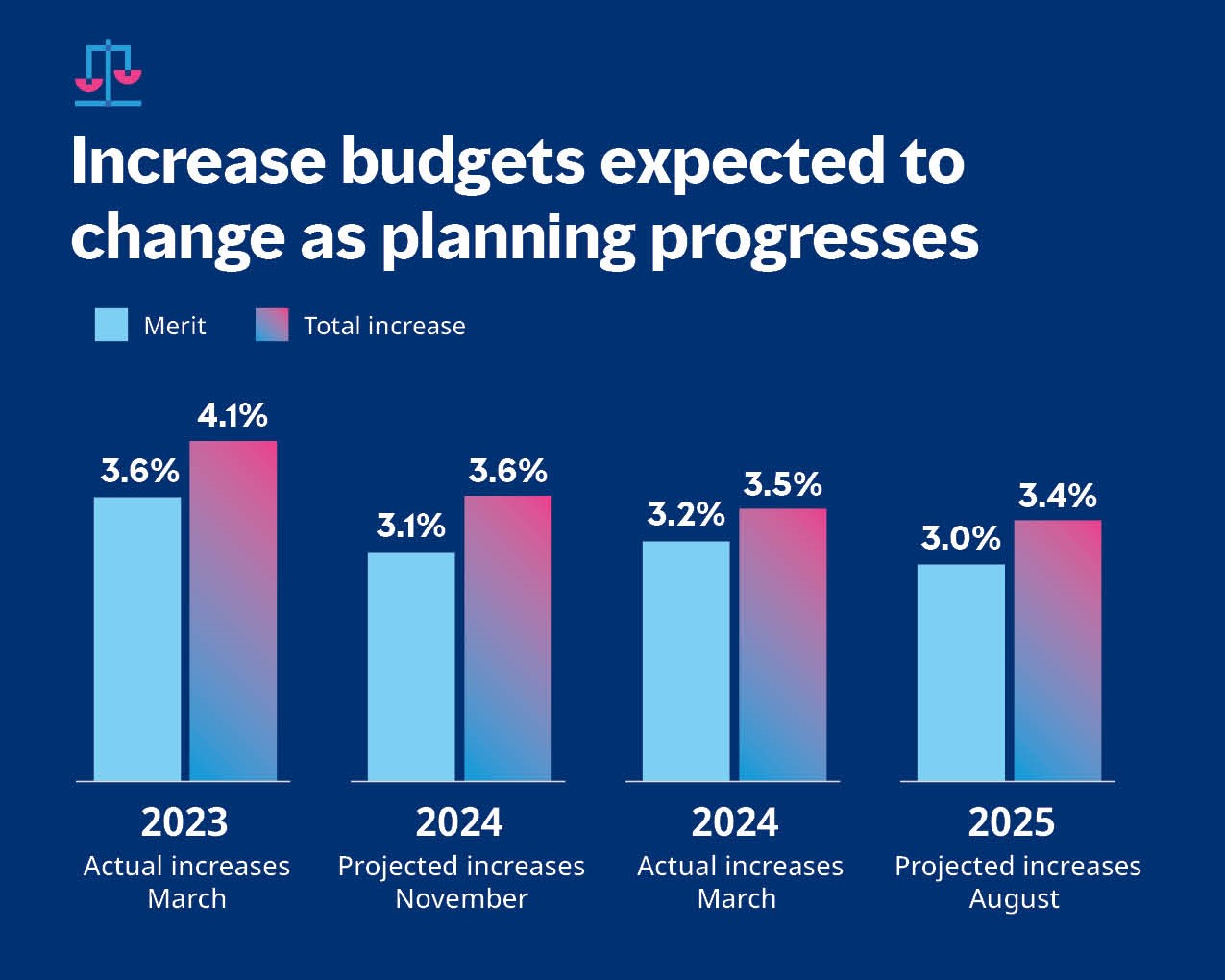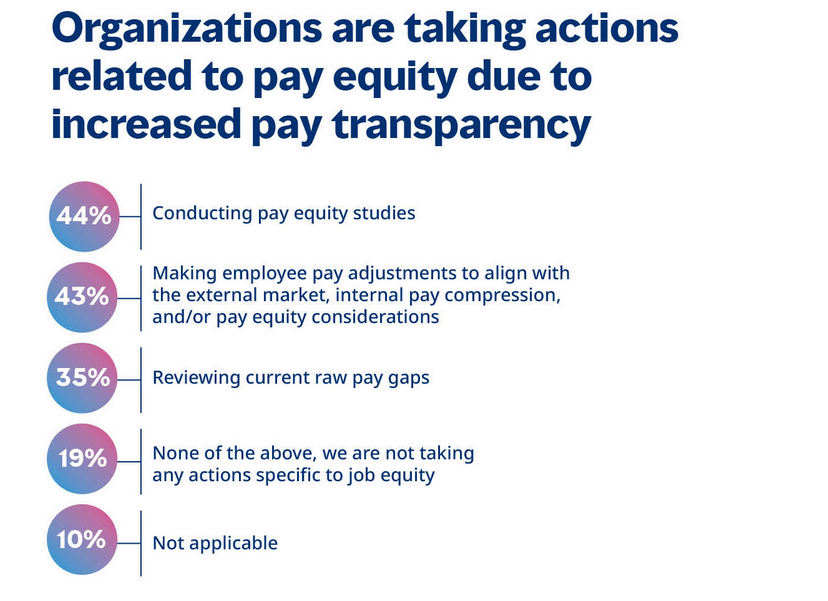Market adjustments, other pay increases for retention not matching rates of 2021, 2022

Employers are projecting smaller pay increases in the year 2025 compared to actual salary bumps this year, according to a recent report from Mercer.
For next year, employers are projecting a 3.4 per cent overall increase budget and a 3.0 per cent merit increase budget.
Both are lower than the 3.5 per cent and 3.2 per cent actual increases seen in 2024. The projections for 2025 are also lower than the increases employers provided in 2023.
It seems employers have turned their back on pay increases outside of annual ones, according to Mercer.
“In March of 2024, the average total increases delivered was 3.5 per cent. When we look at how much same incumbent pay has changed between January 1 and June 30, 2024, which would include that 3.5 per cent increase, we see an average change of only 3.4 per cent.
“Although the methodologies differ, it is clear that employers are no longer providing market adjustments or other pay increases meant to retain employees at the rates they were in 2021 and 2022,” it says.

Source: Mercer
Budgets, however, are far from formalized. Among the nearly 600 organizations Mercer surveyed, just two per cent have their proposed budgets already approved by leadership.
Seven per cent have proposed budgets but are waiting for action from leadership, while 91 per cent describe their budgets as “preliminary”.
Pay is still among workers’ top priorities in 2024, according to a previous report from ADP.
Fewer promotions for Canadians
Employers are also projecting fewer promotions for 2025 (7.5 per cent) compared to what they planned to give workers this year (eight per cent). For companies that have a separate promotional budget, the average promotional increase budget for 2025 is 1.1 per cent.
“Almost half of respondents said they don’t do promotions at a focal point during the year, but do them “as needed.” Just over a quarter of the respondents limit promotion cycles to once per year,” says Mercer.
“Interestingly, employers are increasingly providing pay increases for lateral job changes often, assuming certain conditions are met.”
When it comes to promotions, people who list their soft skills as well as their hard skills on LinkedIn are promoted eight per cent faster than those who only listed hard skills, according to a previous report.
Pay transparency ‘accepted as the norm’
Organizations are also taking action to ensure pay transparency, according to Mercer.
“It’s safe to say that organizations and employees have accepted pay transparency as the norm. While they are, of course, complying with laws, 25% are exploring sharing pay ranges beyond what’s required by law. Another 15% replied that they already share pay ranges both internally and externally in a standard way.”
And employers recognize that “pay transparency requirements will continue to expand not only nationally, but globally.”
For the salary range, 51 percent of employers only include salary ranges on postings where legally required while 18 per cent are sharing ranges nationally in job postings.
When they are sharing ranges, Canadian companies are including some of the following in job postings:
- National, market-based pay structure: 17 per cent
- Geographically adjusted market-based pay structure: 12 per cent
- A subsection of our market-based structure (e.g., +/- 10% of midpoint/market median): 15 per cent
Pay transparency in job postings in Canada has become far more common compared to five years ago, according to a previous report.
As for remote jobs, 21 percent of employers said they post salary ranges for all remote jobs while 33 percent only include ranges when the remote job is associated with an office location where it is legally required, said Mercer.
Employers are also doing a number of things to ensure pay equity.
Source: Mercer




